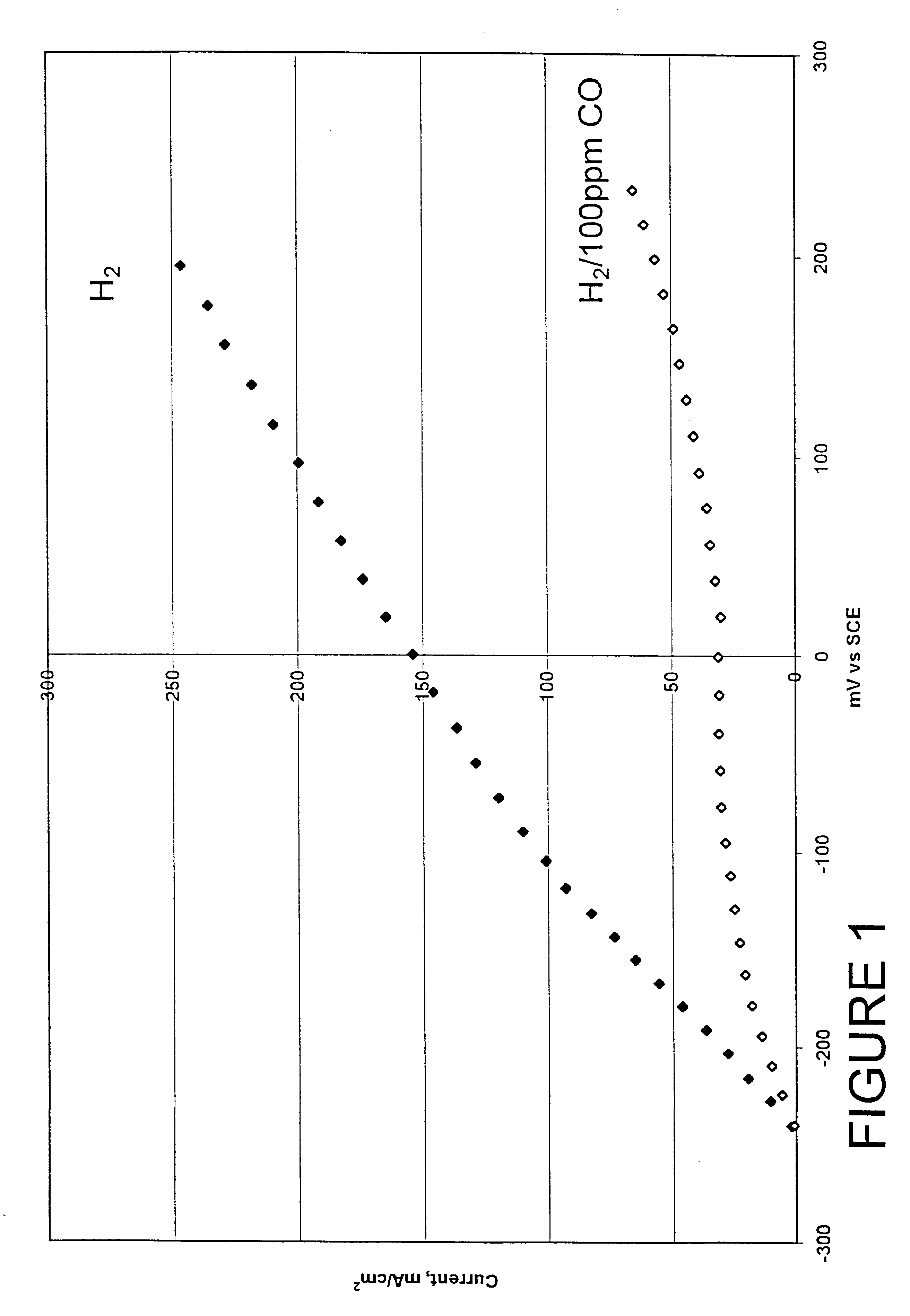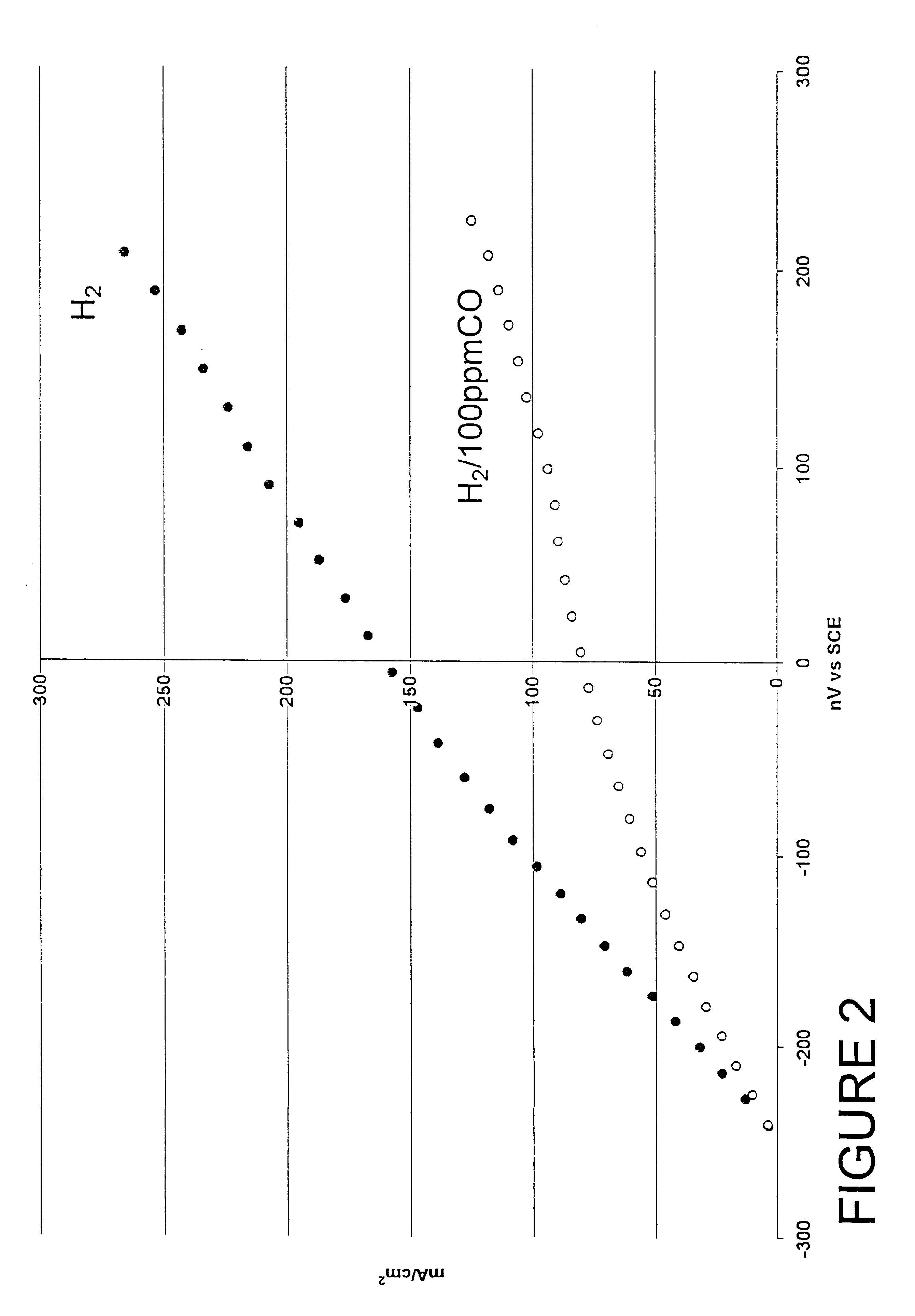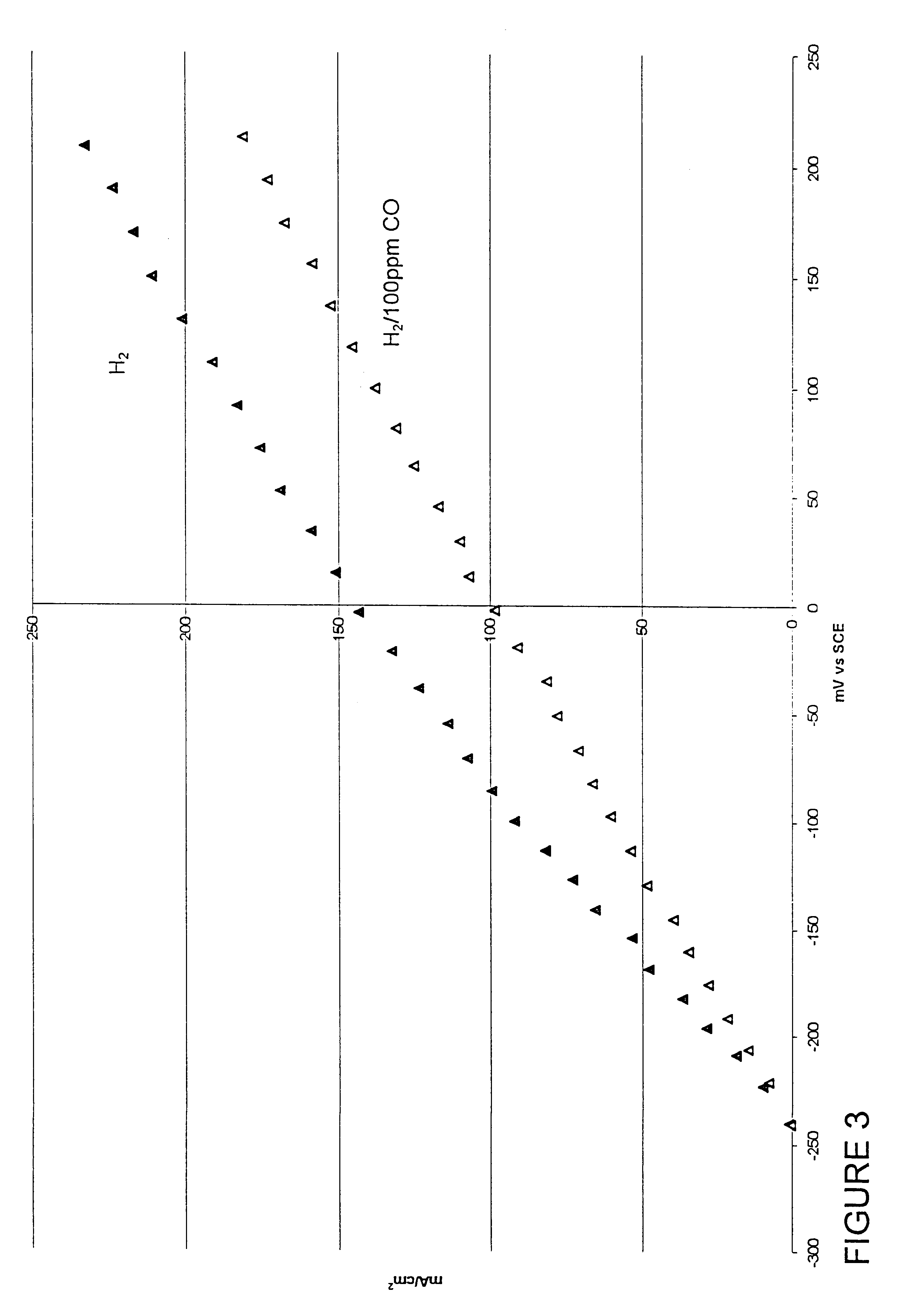Composition of a selective oxidation catalyst for use in fuel cells
a technology of oxidation catalyst and fuel cell, which is applied in the direction of fuel cells, metal/metal-oxide/metal-hydroxide catalyst, etc., can solve the problems of inability to develop hydrogen distribution means, limited electrical energy availability, and inability to meet the requirements of electrical energy supply
- Summary
- Abstract
- Description
- Claims
- Application Information
AI Technical Summary
Benefits of technology
Problems solved by technology
Method used
Image
Examples
example 2
A catalyst composed of 30 wt. % alloy on Vulcan XC-72 whereby the alloy is Pt.sub.80 Mo.sub.20 atomic percent follows that of Example 1 except 40.07 ml of a 200 g / l platinum (II) sulfite acid solution is substituted in the first step and 1.478 g of MoO.sub.3 is substituted in the second step.
example 3
A catalyst composed of 30 wt. % alloy on Vulcan XC-72 whereby the alloy is Pt.sub.85 Mo.sub.15 atomic percent follows that of Example 1 except 40.97 ml of a 200 g / l platinum (II) sulfite acid solution is substituted in the first step and 1.209 g of MoO.sub.3 is substituted in the second step.
example 4
A catalyst composed of 30 wt. % alloy on Vulcan XC-72 whereby the alloy is Pt.sub.75 Mo.sub.25 atomic percent follows that of Example 1 except that the colloidal solution of MoO.sub.3-x (Molybdenum Blue) is prepared separately, following the same general method described to form this species in situ, then added to the platinum on carbon slurry. The colloidal MoO.sub.3-x particles are readily adsorbed on the carbon surface adjacent to the deposited platinum. After filtration and drying, the alloy phase is formed as previously described.
PUM
| Property | Measurement | Unit |
|---|---|---|
| temperature | aaaaa | aaaaa |
| temperature | aaaaa | aaaaa |
| temperature | aaaaa | aaaaa |
Abstract
Description
Claims
Application Information
 Login to View More
Login to View More - R&D
- Intellectual Property
- Life Sciences
- Materials
- Tech Scout
- Unparalleled Data Quality
- Higher Quality Content
- 60% Fewer Hallucinations
Browse by: Latest US Patents, China's latest patents, Technical Efficacy Thesaurus, Application Domain, Technology Topic, Popular Technical Reports.
© 2025 PatSnap. All rights reserved.Legal|Privacy policy|Modern Slavery Act Transparency Statement|Sitemap|About US| Contact US: help@patsnap.com



